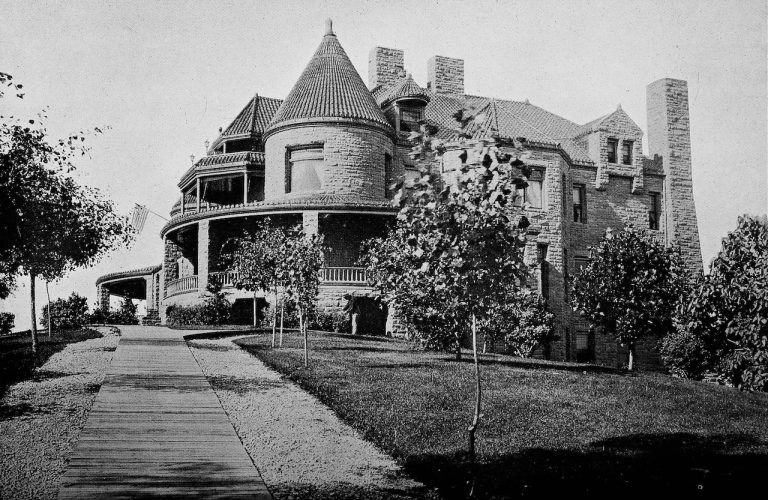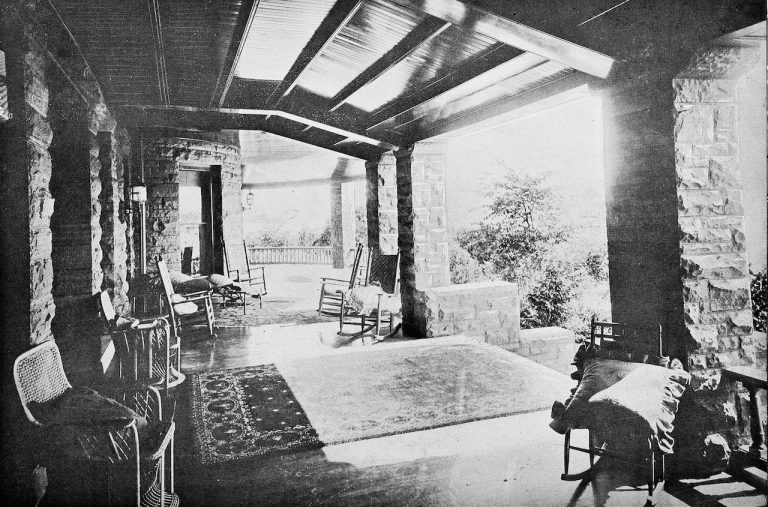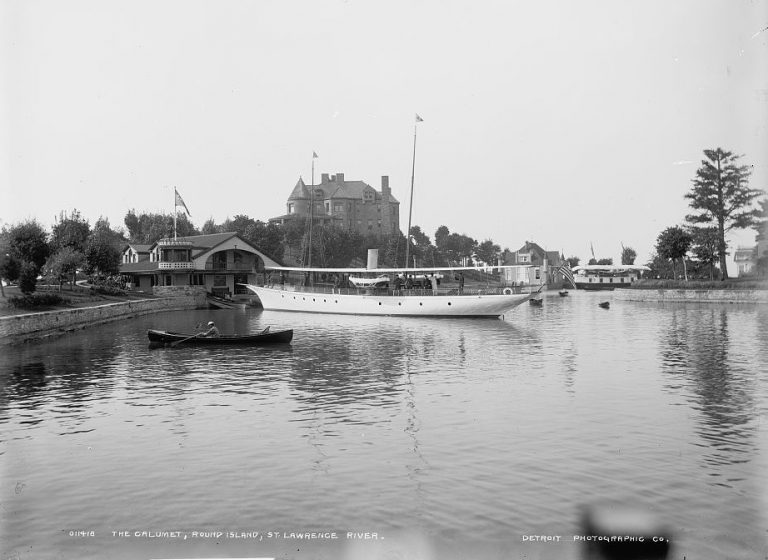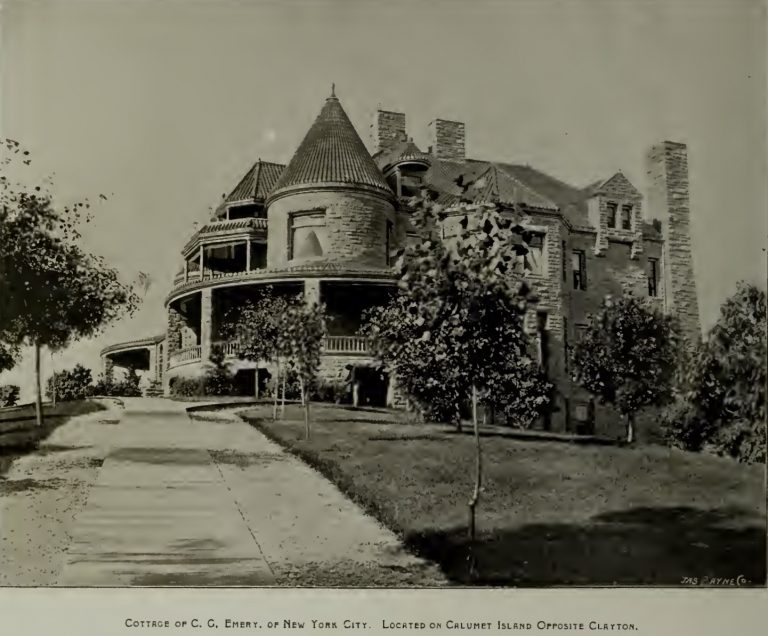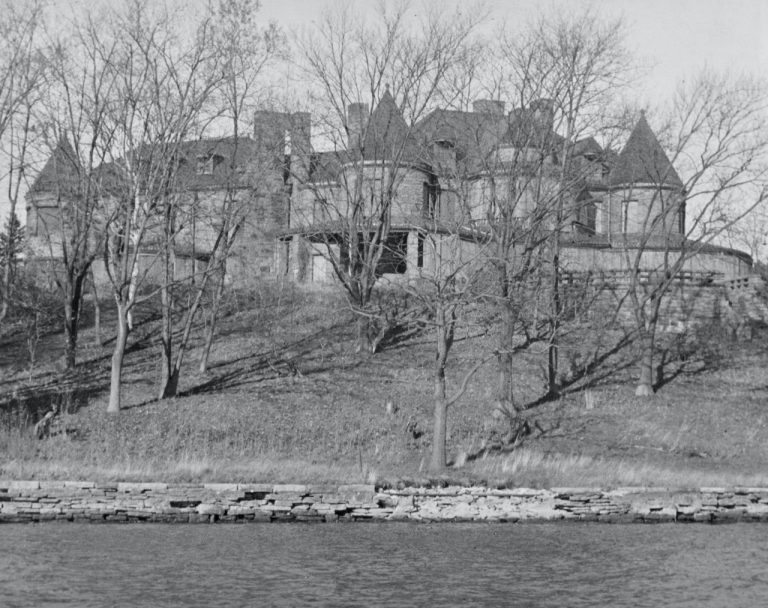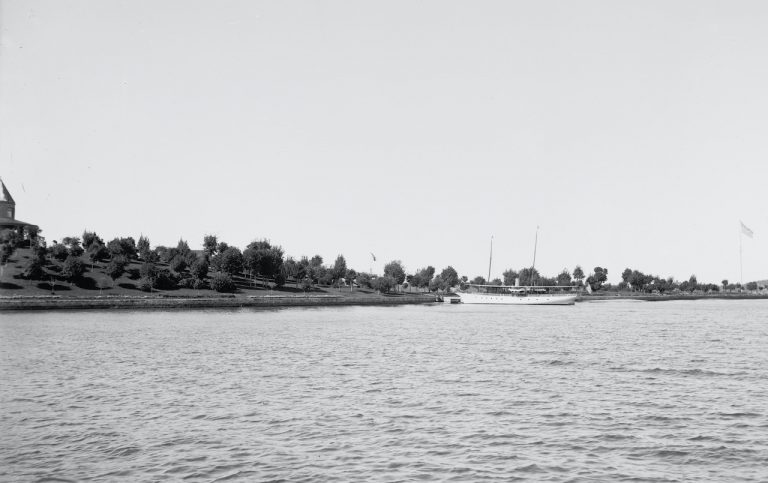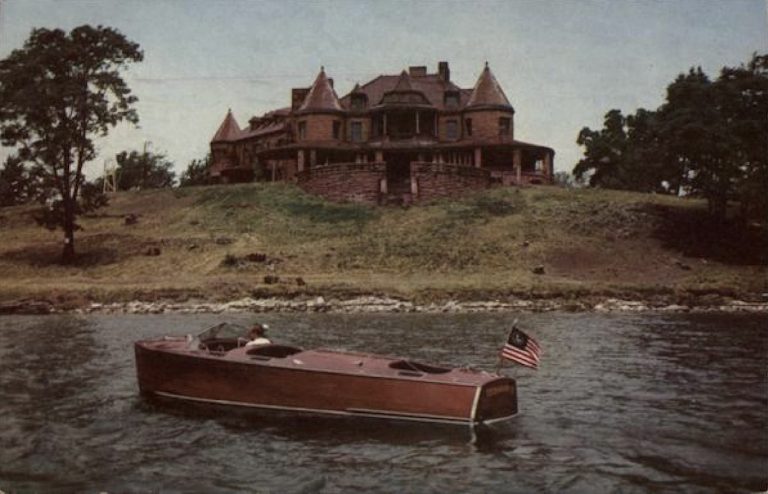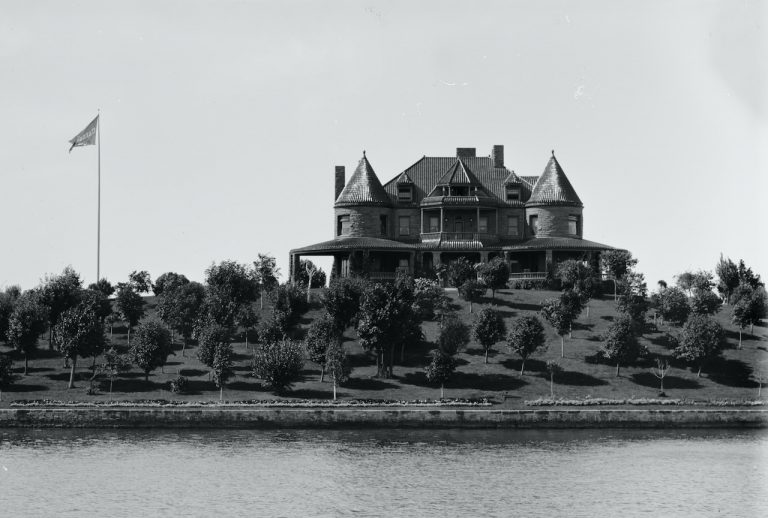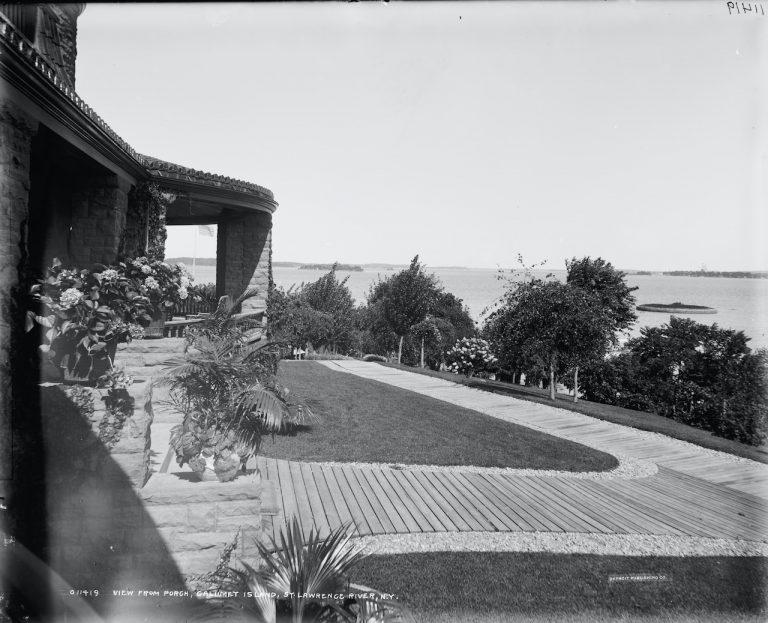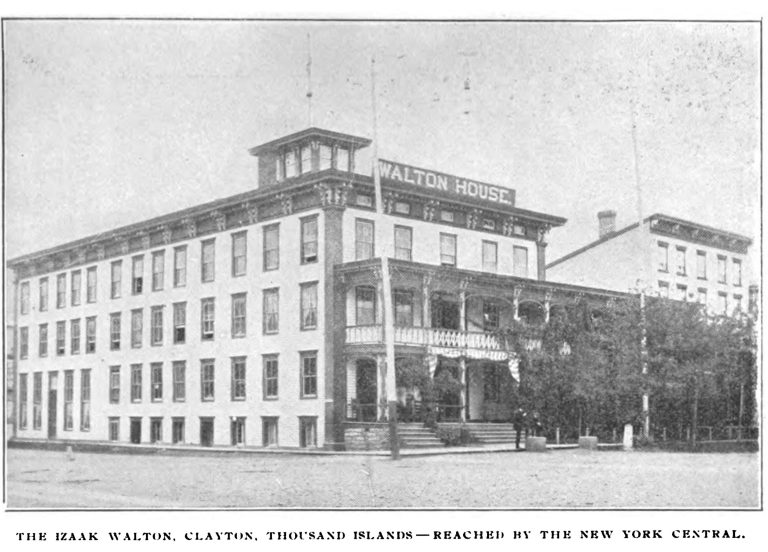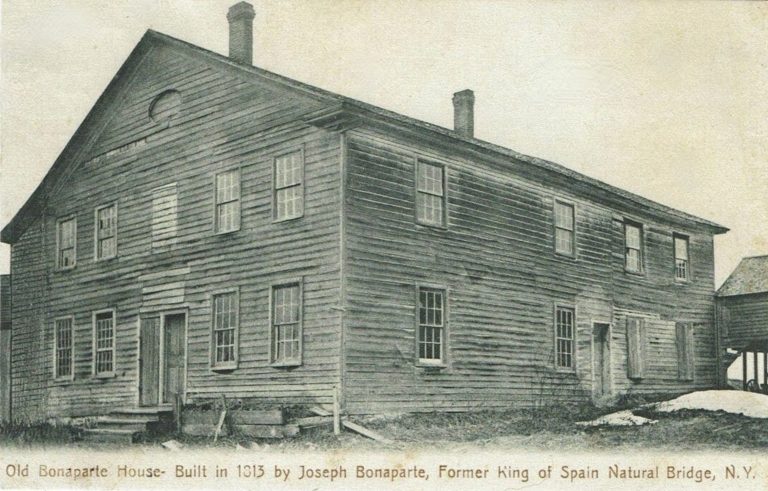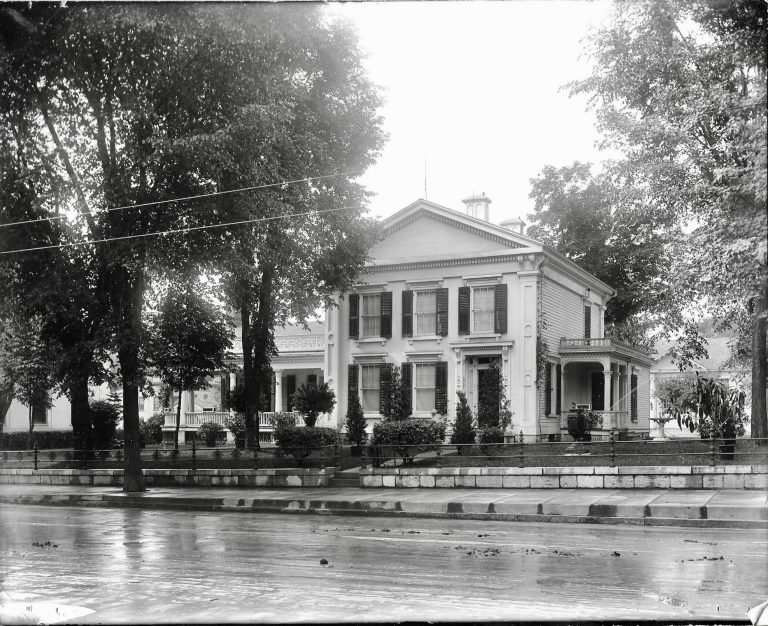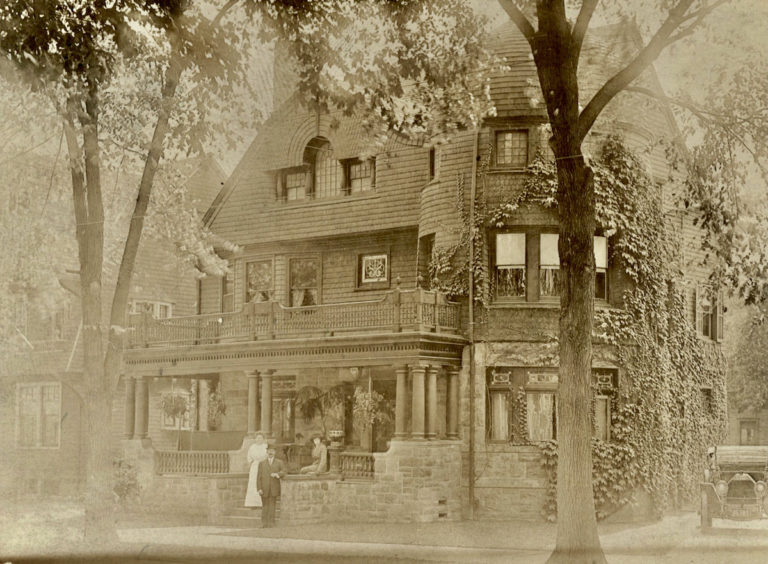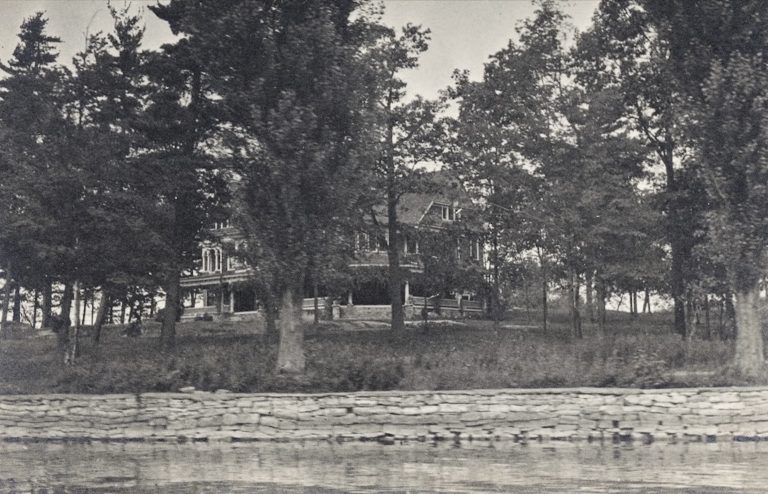Tobacco Giant Charles G. Emery Constructs Emery Castle On Calumet Island
In 1882, Tobacco giant Charles G. Emery purchased what was then Powder Horn Island and eventually built Emery Castle on it, the first of several castles to be constructed in the 1,000 Islands during the era. Located approximately .5 mile off the shores of Clayton, New York, the five-acre island was renamed Calumet Island by which it was originally known and still referred to presently. Incidentally, Calumet is a word for the North American Indian peace pipe, so one can understand Emery’s fondness for the original name.
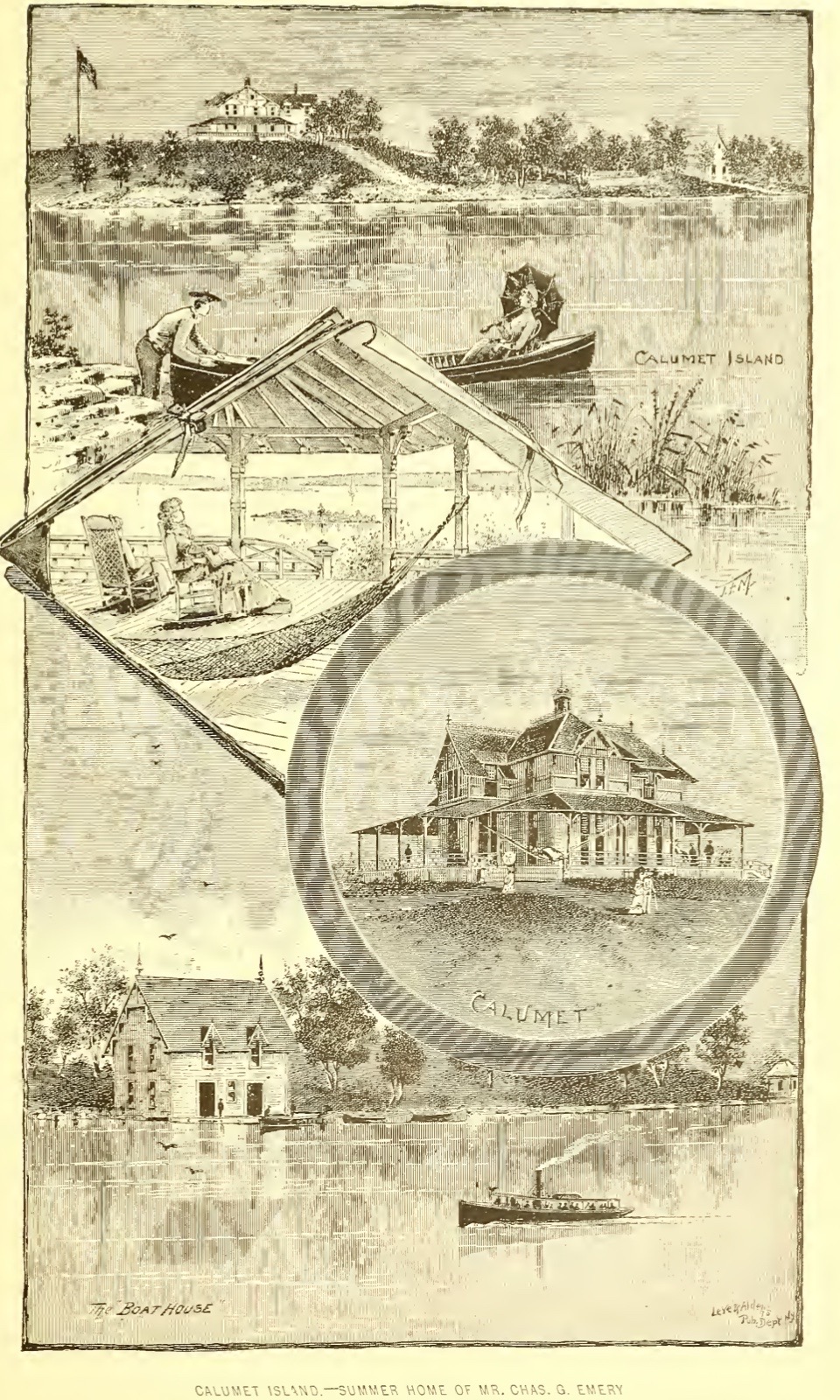
Emery, who resided in Brooklyn, immediately began making improvements to the property, investing nearly $15,000 in various projects, including a wall around the island, two docks along with an ice and boathouse, and a cottage designed by Watertown architect Gustav Cook. The construction seemingly fit the bill for Emery, so to speak, for the better part of a decade before he looked to build something a bit more grand.
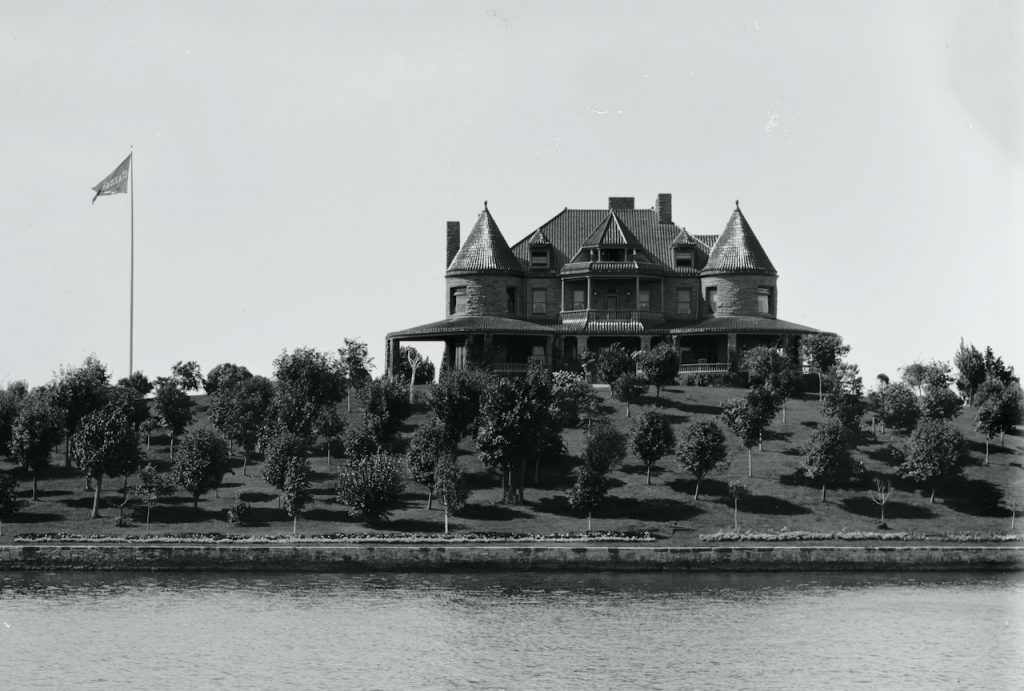
On April 28 1893, On the St. Lawrence and Clayton Independent wrote about the forthcoming construction of Emery Castle–
Calumet Island, opposite Clayton, the summer home of Charles G. Emery, of New York City, will soon present a busy appearance. The cottage built of wood, which for many years has been the summer habitation of Mr. Emery and family, was removed last fall, and is shortly to be replaced with a solid marble structure, which is said will equal if not surpass the grandeur of any cottage yet built at the Thousand Islands.
Many thousands of dollars have been expended by Mr. Emery on this beautiful spot of nature, until it now resembles an earthy paradise. The finishing touches are now about to be commenced, when a brilliant gem will be added to the already glorious luster of the Thousand Islands.
Indeed, Emery Castle would become the Thousand Islands’ first castle constructed. John W. Griffin of Watertown designed and supervised the construction of the building. Upon its completion, photos placed at the Great Wardrobe clothing store’s show window on Public Square drew great attention.
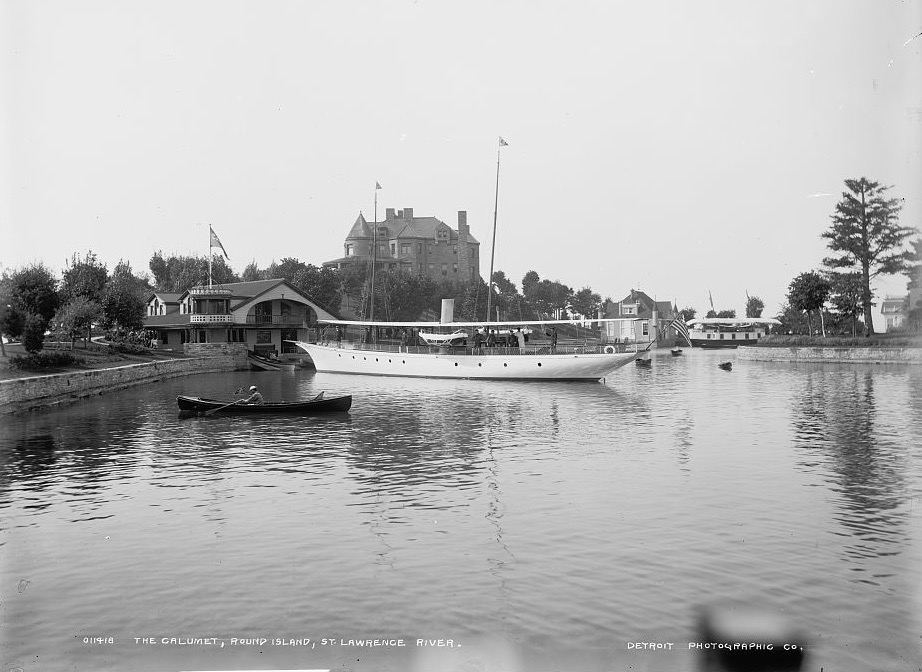
The Watertown Daily Times noted some specifics about Emery’s Castle in its October 30, 1895 edition, calling it one of the most attractive and expensive homes among many that adorn the isles of the St. Lawrence–
The Emery castle is built of Potsdam red sandstone, with red brown glazed Spanish tile and copper medal work. The principal front is oppose the Clayton dock. The base line is 36 feet above the water. The main hall, 22 feet wide, extends from the front to the rear of the building. On one side are the living and dining rooms, butler’s pantry and lavatory; on the other side are the parlor, library and billiard rooms.
On the second floor there are seven sleeping rooms, all elaborately furnished. There are nine bathrooms in the building and ten fireplaces. The fireplace in the main hall is 8 feet wide and is built of Richville white marble. The other fireplaces are built of sandstone and brick of unique designs.
It was also noted that the tank in the attack supplied 6,000 gallons of water for use while a powerhouse and a keeper’s residence were also included on the island, which Emery had just recently started to construct a boathouse as well.
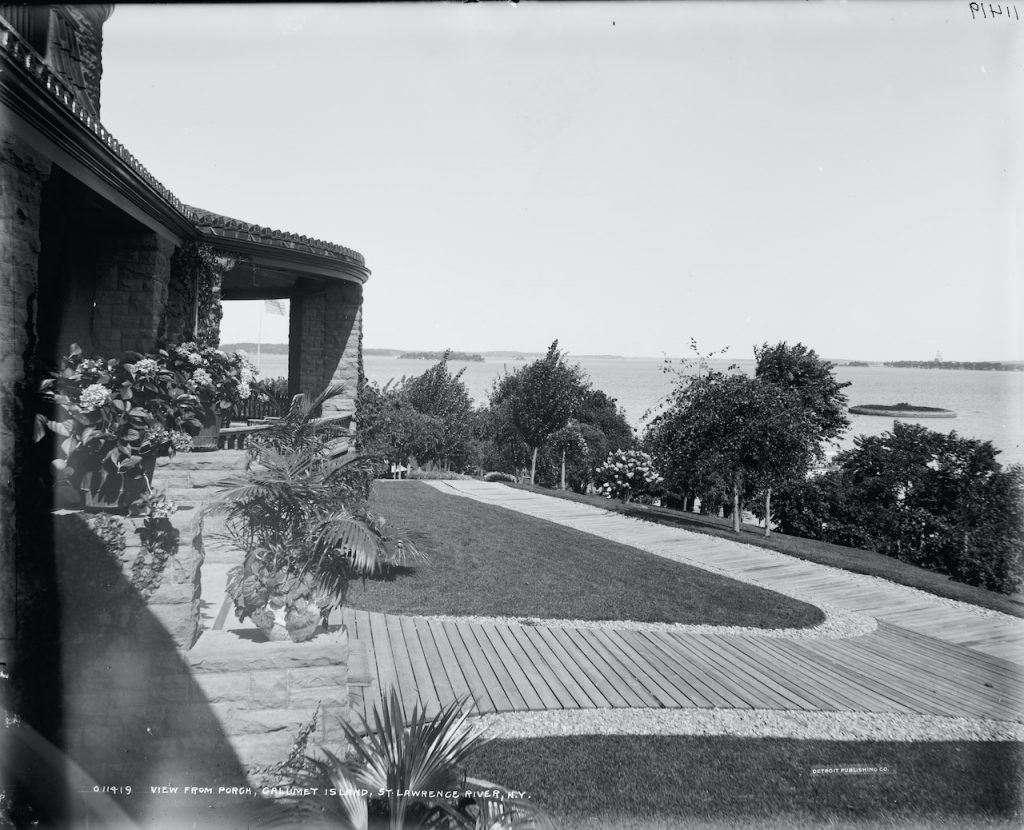
This was not the only venture Charles G. Emery undertook in the Thousand Islands. In 1898, Emery purchased a controlling interest in the Frontenac Hotel on neighboring Round Island, approximately 1.5 miles away, and rebuilt the “old” hotel. It was only 20 years completed and was remodeled in 1888, making it “the grandest hotel structure found anywhere outside of the largest cities, and in point of beauty, convenience, and location second to none in the country.”
The following three photos show the transformation of the original Round Island House into Frontenac Hotel and then The New Frontenac, all within a matter of 21 years.
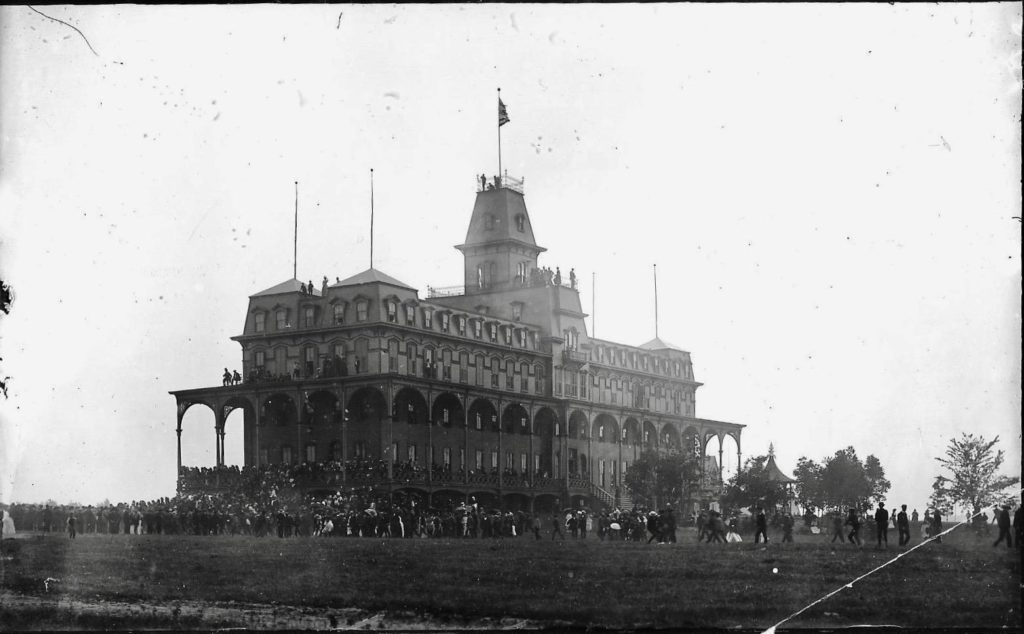

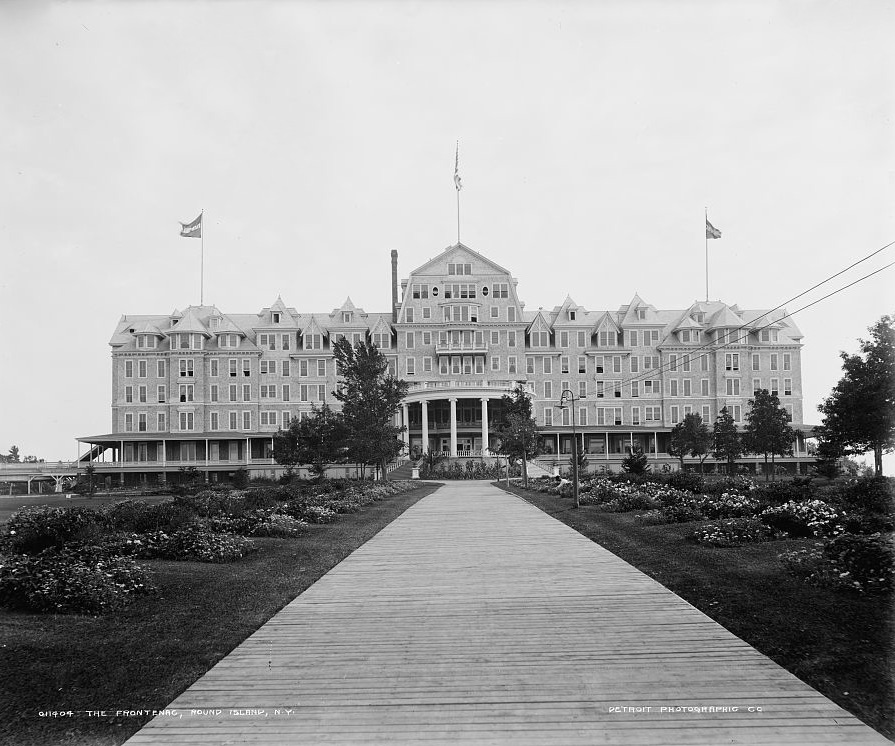
The “New Frontenac” would open in 1899 and, in a twist of irony, be destroyed in a fire started by a cigarette.
In 1902, Emery had a tall water tower erected on the island. It’s a landmark that still stands today and has been converted into a lighthouse. During this time, the Thousand Islands would see the construction, and demise, of many hotels and two more castles.
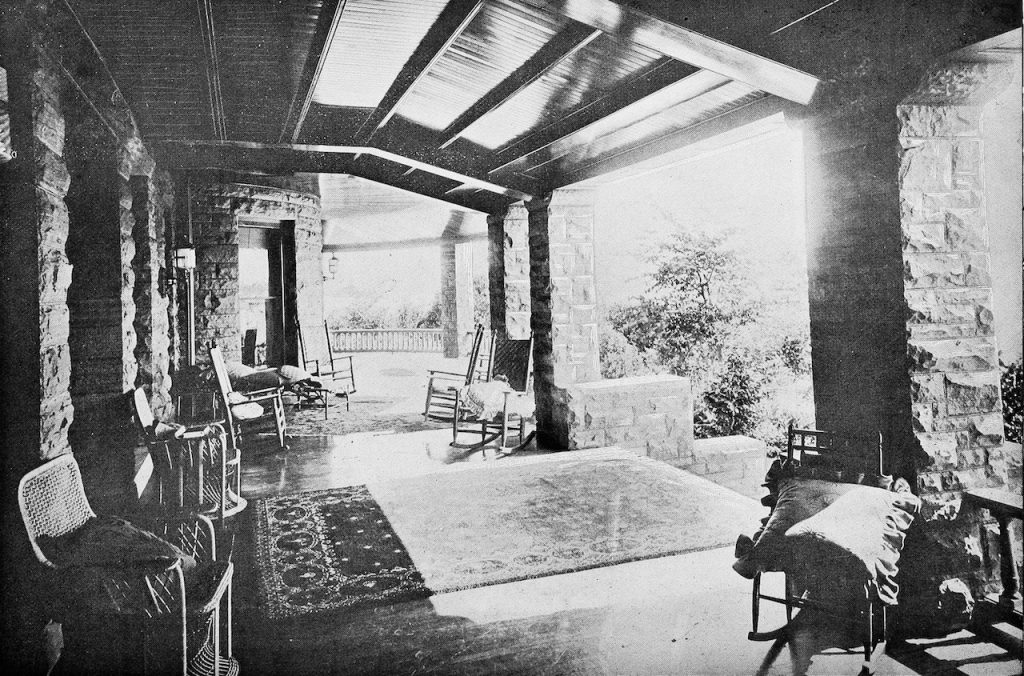
Emery, who was friends with George Boldt, proprietor of the Waldorf-Astoria in New York City, may, in fact, have inspired Boldt to build his own eponymous castle, Boldt Castle, several years later. Unfortunately, friendship, hotels, and castles weren’t the only thing the two shared in common. Emery’s first wife died of breast cancer. His second wife, stricken ill in 1907, spent her last days, by request, at Emery Castle. After her death, Charles Emery abandoned the castle for good, like his friend George Boldt after his wife’s death.

Upon his death in January of 1915, all property in Jefferson County owned by Charles G. Emery was sold, with the exception of Calumet Island, which, per his will, was left in the trust of his son, Frank Emery. The island at that time was believed to be worth just under $1,000,000. Frank, who resided in Pasadena, owned land there and was about to sell it when his father advised him to hold onto it. As it turned out, oil would be discovered and through a contract with the Standard Oil Company, Emery received royalties totaling $3,500 per day.
Frank Emery passed away unexpectedly in 1920, believed to have been 58 at the time. He was in the midst of transferring the property to his son Charles G. Emery, II and making a new summer home on neighboring Governor Island. Charles received Calumet Island as planned, but would not make his first visit until 1925. At this point, the Castle had been closed for about a dozen years, Charles’ father Frank having spent his time visiting in the smaller cottage on the island.
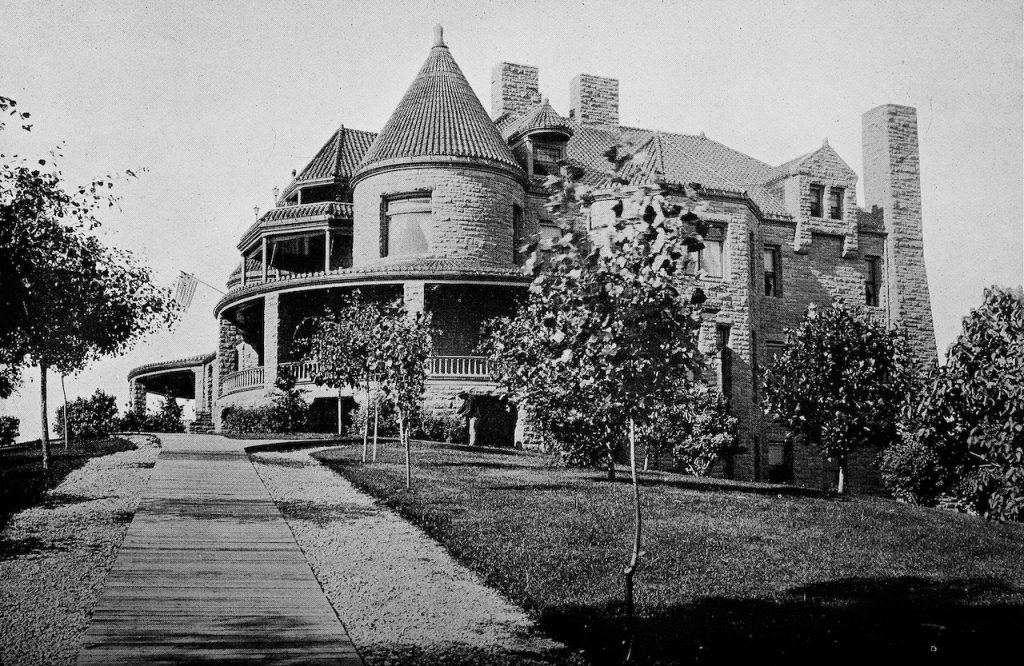
In the ensuing years, Charles G. Emery, II frequented the island less and less. A trip to it in 1930 was his first in several years and he was mum on any future plans. The Emery castle eventually joined Boldt Castle as mostly abandoned, and the Emery descendants no longer spent summers there. In 1947, after a long litigation battle to sell the estate, the family could finally do so, citing the burden of upkeep and taxes.
1950 the land and property were sold to the Calumet Castle Corporation for $11,500. The Emery Castle opened as a summer resort for the public for the next few summers, but in 1956, a fire broke out in the castle. Later that year, the decision was made by the present owner to raze it, ending the era of the first castle to be built in the Thousand Islands.
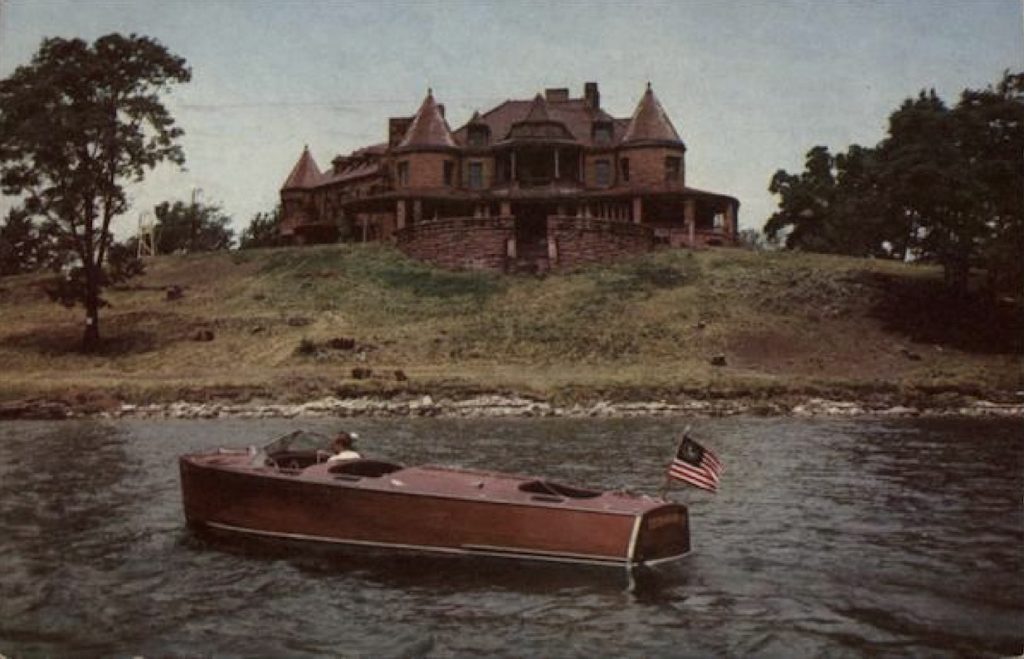
Interesting Tidbits
In 1922, Lawrence “Crip” Clickner, was convicted of the theft of 1,100 rare bottles of liquor from the Emery Castle on Calumet Island. After serving time, Crip would be back into the crime and responsible for the shooting death of Abraham Hartman of Syracuse in 1925. The shooting occurred in Watertown after drinking some cheap, low-quality bootlegged booze called “Brain Killer” by investigators.
